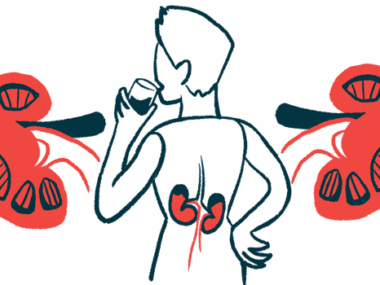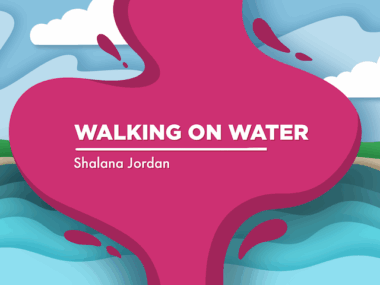On the 5-year anniversary of my diagnosis, I’m grateful to be alive
My aHUS diagnosis anniversary is a time to reflect on an arduous journey
Written by |

Typically, when someone wishes you a happy anniversary, it’s to celebrate another year in a relationship, marriage, or even a career. It’s a time to reflect on all the effort put in, the adventures experienced, and the achievements made during that time. This week marks an important five-year anniversary for me: Five years ago, I almost died.
In September 2020, with my young children in tow, I went to the emergency room feeling sicker than I’d ever been in my life. I assumed I’d contracted COVID-19 again and expected to receive some fluids, medication, and a doctor’s note to take a few days off work. But the way that hospital staff was acting made it clear to me that something was seriously wrong.
I underwent a series of tests, including temperature and blood pressure checks, difficult blood draws, X-rays, and more blood tests, again and again, until the moment that changed my life forever. A nephrologist entered the ER room to tell me that I was dying — at just 36 years old, with 4- and 5-year-old children to care for.
My kidneys and liver were failing. My heart was enlarged. My red blood cells were being destroyed faster than my body could produce them, and I had almost no platelets left. Additionally, doctors suspected that I might’ve had a stroke, though additional tests were needed.
I was admitted to the intensive care unit, which became my home for nearly two months. During that time, I underwent 18 blood transfusions, dialysis, and plasmapheresis, and then suffered from a fall that caused a liver hematoma, migraines, uncontrolled hypertension, and severe edema. I also received infusions of the monoclonal antibody Soliris (eculizumab), which had numerous side effects.
Ultimately, I was diagnosed with two autoimmune diseases — atypical hemolytic uremic syndrome (aHUS) and thrombotic thrombocytopenic purpura (TTP) — in addition to the conditions I already had — lupus and immune thrombocytopenia (ITP). These new diseases, in conjunction with ITP, meant that my immune system was essentially attacking every component of my blood except my white blood cells.
aHUS led to hemolytic anemia, which destroyed my red blood cells. TTP caused small blood clots to form in my kidneys and liver, nearly destroying them. And ITP attacked my platelets. On top of all this, I have the rare thrombomodulin (THBD) mutation, which occurs in between 3% and 5% of all aHUS patients. This mutation suggests I will need Soliris treatment to suppress my immune system for the rest of my life. Even if I receive a kidney transplant one day, without a suppressed immune system, the disease might attack the new organ, which could keep me off the transplant list.
Living with the permanent damage caused by aHUS isn’t easy, nor is coping with the constant side effects of Soliris. However, being alive and rebuilding my life five years after this diagnosis is something significant.
Before the U.S. Food and Drug Administration approved Soliris and Ultomiris (ravulizumab-cwvz) to treat aHUS, the aHUS Alliance reported that over half of aHUS patients progressed to kidney failure within three years. Additionally, 65% required long-term dialysis, suffered permanent kidney damage, or died within the first year after diagnosis. Some sources suggested at the time that life expectancy was five years or less.
Despite the unpleasant side effects, Soliris has allowed me to survive for five years. It helped my kidneys heal just enough for me to come off dialysis and prevents my immune system from destroying me. In the past five years, I’ve been able to be present for my children, create memories while traveling the world, find love again, become a patient advocate, and start a new life in a state I have always wanted to live in.
In five years, I’ve risen like a phoenix from the ashes, and I’m excited to see what the future holds.
Note: aHUS News is strictly a news and information website about the disease. It does not provide medical advice, diagnosis, or treatment. This content is not intended to be a substitute for professional medical advice, diagnosis, or treatment. Always seek the advice of your physician or other qualified health provider with any questions you may have regarding a medical condition. Never disregard professional medical advice or delay in seeking it because of something you have read on this website. The opinions expressed in this column are not those of aHUS News or its parent company, Bionews, and are intended to spark discussion about issues pertaining to aHUS.







Leave a comment
Fill in the required fields to post. Your email address will not be published.